Tall, thin evergreen trees, also known as columnar or fastigiate trees, are ideal for creating privacy screens, windbreaks, or vertical accents in landscapes with limited space. Popular varieties include Italian Cypress, Skyrocket Juniper, and Emerald Green Arborvitae. These trees typically require full sun, well-draining soil, and moderate watering.
As a landscape architect with over two decades of experience, I’m excited to share my knowledge about these elegant, space-efficient trees. Whether you’re looking to enhance your property’s privacy or add a striking vertical element to your garden, tall, thin evergreens offer versatile solutions for various landscaping needs.
Top 5 Tall, Thin Evergreen Trees
1. Italian Cypress (Cupressus sempervirens)
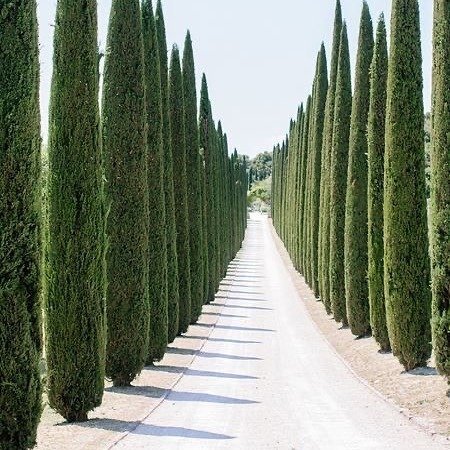
Height: 40-60 feet Spread: 3-5 feet USDA Zones: 7-10
Italian Cypress is known for its extremely narrow, columnar shape and dark green foliage. It’s drought-tolerant once established and ideal for Mediterranean-style gardens.
Learn more about Italian Cypress from the Missouri Botanical Garden
2. Skyrocket Juniper (Juniperus scopulorum ‘Skyrocket’)
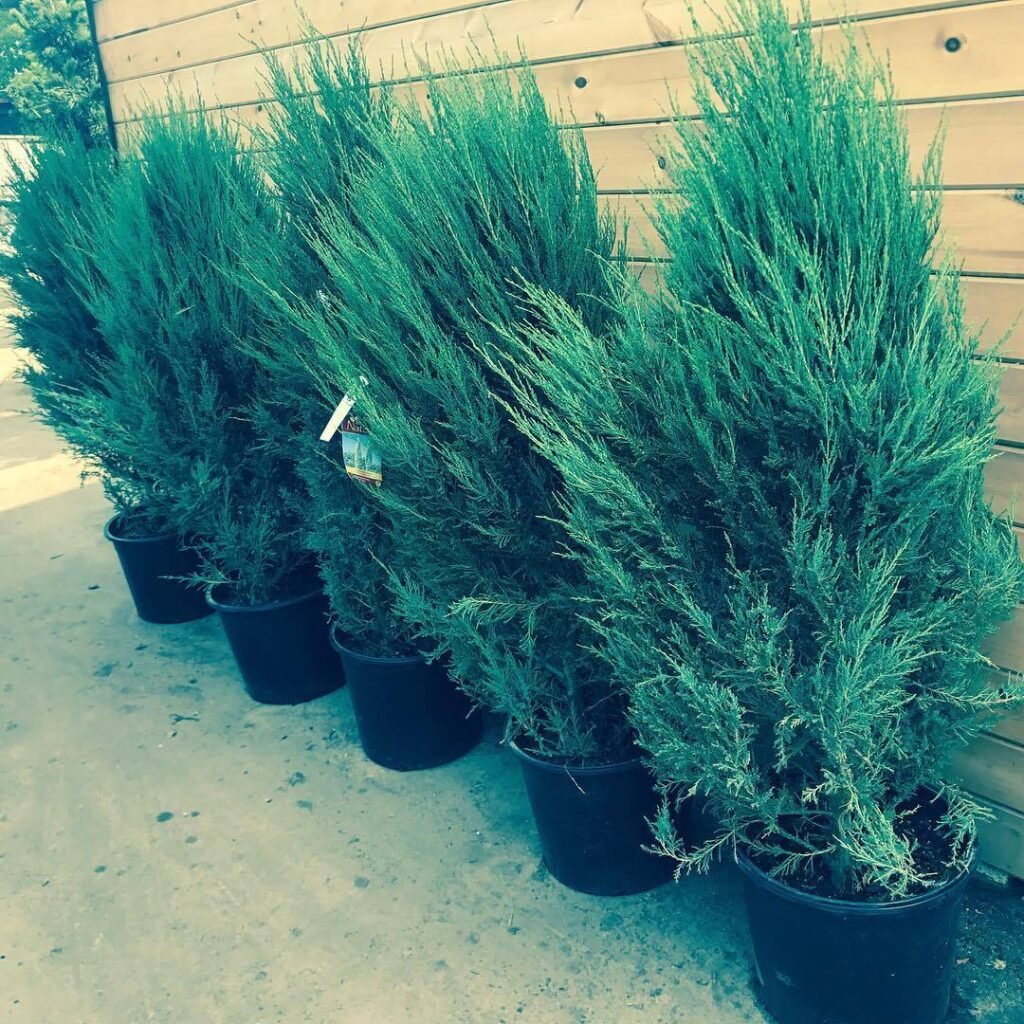
Height: 15-20 feet Spread: 2-3 feet USDA Zones: 4-9
This slender juniper has blue-green foliage and is exceptionally cold-hardy, making it suitable for northern climates.
3. Emerald Green Arborvitae (Thuja occidentalis ‘Smaragd’)
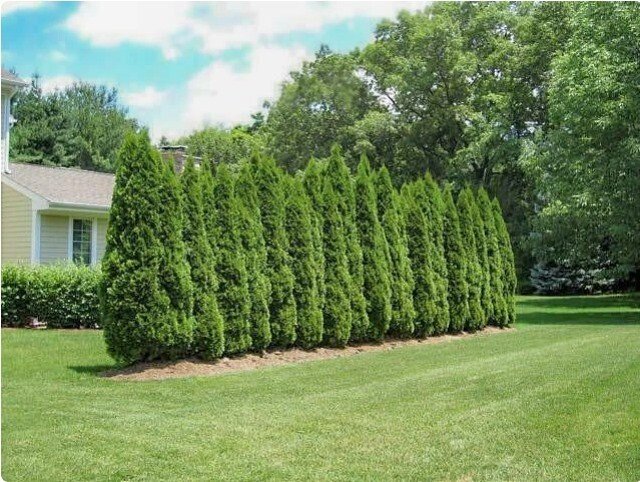
Height: 12-14 feet Spread: 3-4 feet USDA Zones: 2-7
Popular for hedges and privacy screens, this arborvitae maintains its bright green color year-round.
Discover more about Emerald Green Arborvitae from North Carolina State Extension
4. Fastigiate Irish Yew (Taxus baccata ‘Fastigiata’)
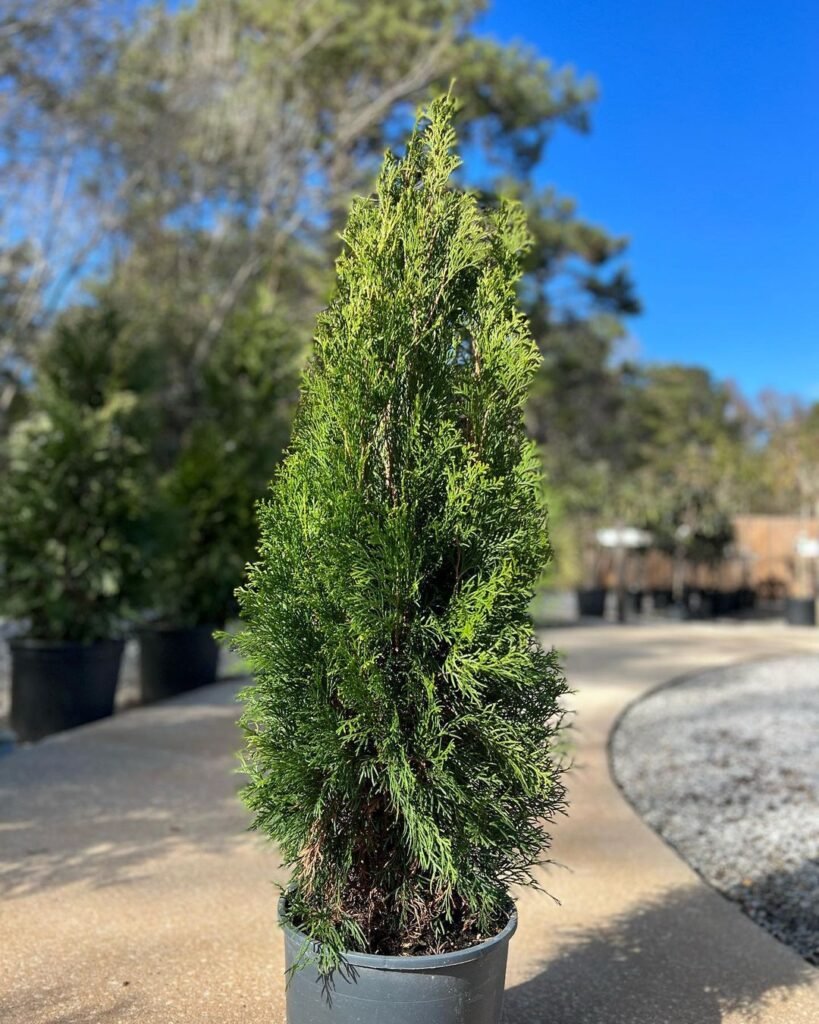
Height: 15-30 feet Spread: 4-8 feet USDA Zones: 6-8
This slow-growing yew has dark green needles and a dense, columnar form.
5. Slender Hinoki Cypress (Chamaecyparis obtusa ‘Gracilis’)
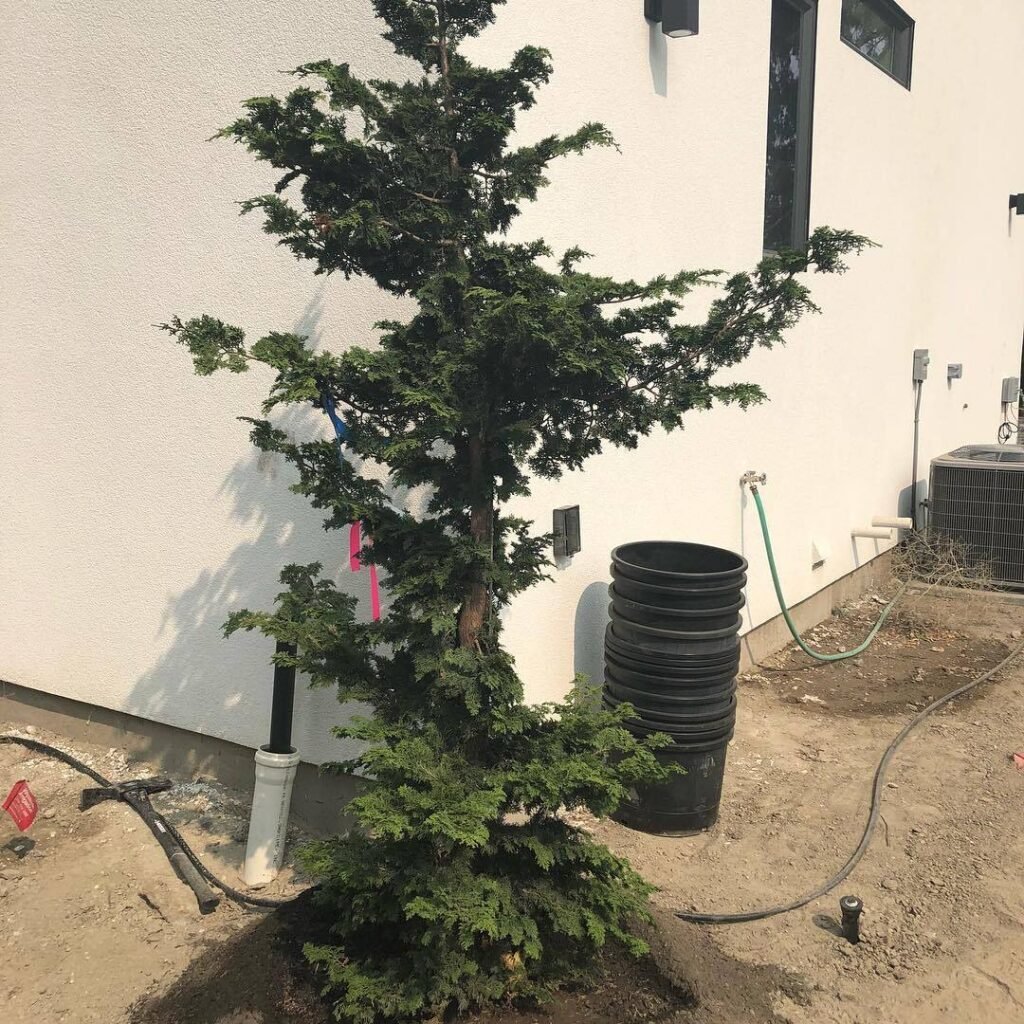
Height: 15-20 feet Spread: 4-6 feet USDA Zones: 4-8
Known for its elegant, feathery foliage, this cypress adds texture to the landscape.
Planting and Care Tips
Choosing the Right Location
- Ensure full sun exposure (6+ hours of direct sunlight daily)
- Consider mature height and spread when planting near structures
- Allow for adequate spacing between trees if creating a screen
Soil Preparation
- Most tall, thin evergreens prefer well-draining soil
- Amend heavy clay soils with organic matter to improve drainage
- Conduct a soil test to determine pH and nutrient levels
Learn about soil testing from the University of Massachusetts Amherst
Planting Process
- Dig a hole twice as wide as the root ball and equally deep
- Place the tree at the same depth it was in the container
- Backfill with native soil, tamping gently to remove air pockets
- Water thoroughly after planting
Watering
- Water deeply and regularly during the first growing season
- Once established, most species are drought-tolerant but benefit from occasional deep watering during dry spells
Fertilizing
- Apply a slow-release, balanced fertilizer in early spring
- Avoid over-fertilizing, which can lead to excessive growth and weak structure
Pruning
- Most tall, thin evergreens require minimal pruning
- Remove dead or damaged branches as needed
- Light shaping can be done in late winter or early spring
Discover proper pruning techniques from the University of Minnesota Extension
Landscape Uses
Privacy Screens
Plant in a row to create a living fence or screen unsightly views.
Windbreaks
Use taller varieties to protect your property from strong winds.
Vertical Accents
Plant individually or in small groups to add height and interest to your landscape design.
Entryway Sentinels
Flank doorways or gates with matching pairs for a formal, elegant look.
Potential Issues
Pest and Disease Management
- Monitor for common evergreen pests like spider mites and bagworms
- Watch for signs of fungal diseases, especially in humid climates
- Ensure proper air circulation to prevent disease issues
Winter Protection
- In colder climates, consider wrapping young trees or those at the edge of their hardiness zone
- Apply a layer of mulch around the base to protect roots from freeze-thaw cycles
Learn about winter protection for evergreens from Iowa State University Extension
Tall, thin evergreen trees offer elegant, space-efficient solutions for various landscaping needs. By choosing the right variety for your climate and providing proper care, you can enjoy these beautiful vertical accents for years to come. Remember to consider the mature size of your chosen species and plan accordingly to ensure your landscape design remains balanced and beautiful as the trees grow. Happy planting!
For more gardening tips and plant care guides, visit usagardenhub.com.


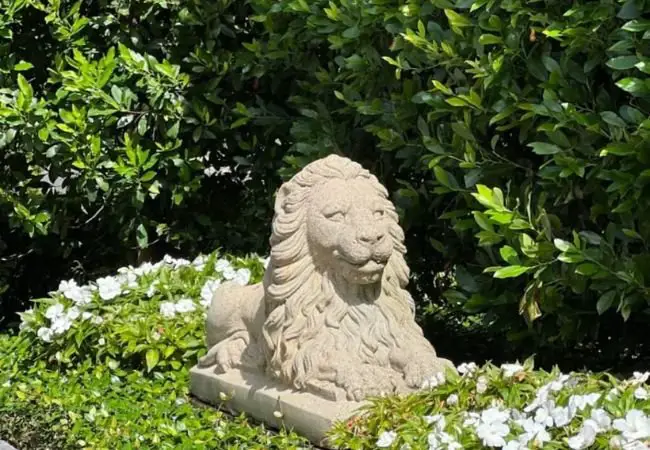

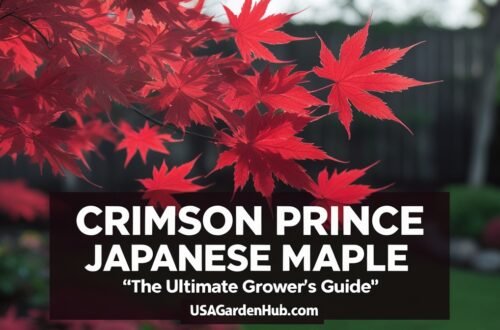


One comment on “Top 5 Tall, Thin Evergreen Trees for Elegant Landscaping (2024 Guide)”